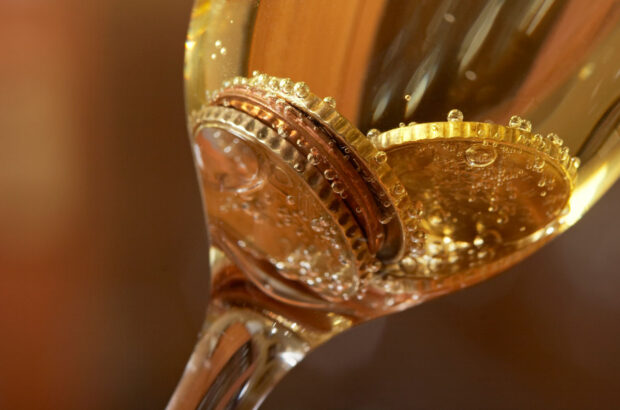A landlocked country framed in the Caucasus Mountains, Armenia has long been trapped within a tough neighbourhood.
Bordering Turkey to the west, Iran to the south, and Azerbaijan to the south and east, with Russia looming in the distance, this international cul-de-sac in the Caucasus was plagued by political, cultural and religious troubles for generations.
Despite the odds, Armenians have proven resilient, with a fierce dedication to protecting their unique culture and wine heritage, proudly shared with visitors willing to make the trek.
The past is the present
Armenia is a land of superlatives: it was the world’s first Christian nation in 301 A.D. (Georgia followed circa 326 A.D.), maintains one of the oldest languages with a continuous written tradition, and claims the oldest winery so far discovered – at 6,100 years of age. Winemaking runs deep in Armenia, predating the Silk Road.
Though Georgia may have legitimate claims to the tagline ‘cradle of wine’, which it trademarked (in the EU) in 2012, both countries share similarities not just in their vinous legacy but in their dizzying array of indigenous grapes and use of clay amphora (called karas in Armenia and qvevri in Georgia). Yet each followed a different path, not necessarily by choice, to arrive at its modern wine story, resulting in disparate wines and tourism experiences.
The invasion of the Soviet Red Army in 1920 would be the greatest defining factor of Armenia’s 20th-century wine industry. The country was merged with Georgia into the Transcaucasian Socialist Federative Soviet Republic in 1922. In 1936, it became the Armenian Soviet Socialist Republic or Soviet Armenia.
The Soviets abolished private enterprise and nationalised industries by forcing republics into economic roles. Georgia specialised in wine production, while Armenia’s grapes were earmarked for brandy distillation. Vineyards sprung up in poor locations to increase volume, while others faced neglect or abandonment.
Since gaining independence in 1991, Armenia’s wine industry has witnessed a renaissance, partly driven by the return of the Armenian diaspora. Winemakers driven by quality have catapulted Armenia into the global wine scene, earning the country its own tagline: the youngest oldest wine industry in the world.
In the last two decades, Armenia has lured renowned ‘flying winemakers’ to its traditions and potential, with luminaries such as Michel Rolland, Paul Hobbs and Alberto Antonini contributing their expertise. From the vineyards of Karas in Armavir to Yacoubian and Zorah in Vayots Dzor, these collaborations signify the sincerity of Armenia’s aspirations.
For a small country, Armenia boasts diverse topography and terroir. The country has catalogued more than 400 indigenous grape varieties. However, its bona fides as a historical winemaking country are interwoven with its tradition of karas amphorae. These large clay vessels, almost lost to the annals of time in the 20th century, have staged a comeback since the mid-2000s.
Traditionally, winemakers bury two-thirds of these amphorae underground, providing natural temperature control, a method employed over 3,000 years ago in the Kingdom of Urartu.
Today, as more wineries experiment with the karas method, Armenia carves a niche as a guardian of its traditions while pushing the boundaries of contemporary wine styles.
Armenian wine regions
Armenia has six historical wine-growing regions, including Artsakh. Today, the country has five: Vayots Dzor, Aragatsotn, Armavir, Ararat, and Tavush. Of those five, the first three offer the best opportunities for fine wine, sightseeing, and hospitality.

NOA Wine in Vayots Dzor. Credit: Lauren Mowery
Vayots Dzor
Vayots Dzor, located along a south-central swath of narrow plateau, elevated Armenia’s international reputation for quality wine. Winemaker Vahe Keushguerian dubbed it the Mendoza of Armenia.
The key grapes grown here are Areni for red and sparkling and Voskehat for white. Many compare Areni to a fuller-bodied Pinot Noir or a slimmed-down Grenache for its red fruit aromas, lively acidity and silky tannins. Agile Voskehat, known for floral, citrus, orchard fruit notes, produces clean and bright styles and savoury textural wines, especially when aged in karas.
Many wineries in Armenia buy grapes from Vayots Dzor because grapes thrive in the region’s volcanic soils and cooler climate. Viticulture in the region remained unbroken during the Soviet era, as it was deemed too far away and too cold to bother sourcing grapes for brandy. These same features have protected vines from phylloxera. Vineyards are planted on their own roots at high elevations, some vineyards nearing 1,800 metres above sea level.
Visually, Vayots Dzor features a striking topography of mountains and valleys. The wines mirror that grandeur in quality, complexity and age-worthiness. Though only a few wineries have visitor facilities, it’s worth making a day trip or spending the night for a few experiences.
NOA Wine in Aghavnadzor offers a rustic tasting experience better suited to the countryside than a contemporary winery. A vine-covered pergola shades a stone patio with views of the mountains framing leafy vineyards. NOA produces wine from 100% estate-grown, organic fruit which visitors can taste by appointment. Staff welcome guests with Armenia’s trademark hospitality: a picnic table covered in tangy local cheeses, fresh cucumbers and tomatoes from Ararat Valley, aromatic herbs such as purple basil, and lavash, a traditional flatbread used for rolling ‘sandwiches’.
Near NOA sit two of the region’s prime attractions: the Areni-1 wine cave complex and the 13th-century Noravank monastery. Regarded as the oldest known winery in the world, Areni-1 was excavated after archaeologists discovered human skulls and a Copper Age leather shoe. Visitors pay a small fee for the tour, while the monastery, perched dramatically on an ochre-hued cliff deep in a valley, is free.
Back in Yerevan, hit the bars of Saryan Street to taste wines from Vayots Dzor. Look for the traditional method sparkling wines from Keush and still dry reds and whites from Zulal, both made by Vahe Keushguerian. Keushguerian, a champion of indigenous grapes, has helped revitalise and modernise the wine industry, while serving as an international ambassador for the country. Other premium boutique brands to seek include Yacoubian-Hobbs and Zorah.

Noravank monastery. Credit: Lauren Mowery
Aragatsotn
Located in the northwest corner of the country, Aragatsotn (meaning ‘foot of Aragats’) has received significant investment in recent years, both in expanding vineyards and constructing modern wineries. Coupled with its proximity to Yerevan, Aragatsotn presents an attractive day trip option. Compared to Vayots Dzor, vineyards sit at significantly lower elevations ranging from 1,100-1,400 metres above sea level. Most of the soil is volcanic, the result of ancient lava flows from Mount Aragats. The main grapes grown in Aragatsotn include Areni, Voskehat plus Rkatsiteli, and the more obscure Kangun, Haghtanak and Karmrahyut. Two wine and hospitality experiences stand out in Aragatsotn: Van Ardi and Voskevaz Winery.
Founded in 2008, Van Ardi enjoys views of Mount Aragats in the distance. Guests can sit on the patio with a lunch of lake trout or lamb paired with Syrah (grown from California cuttings), Areni, Voskehat and Kangun, a local white grape with floral and tropical aromas.
The family behind Voskevaz renovated the oldest functioning winery in Armenia, dating to 1932, into an ersatz medieval village. Tour the old tank rooms, now a museum, filled with Soviet-era relics and antiques. Voskevaz makes excellent wines, specialising in karas-aged old-vine Voskehat and Areni.

Voskevaz Winery in Aragatsotn. Credit: Lauren Mowery
Armavir
In the fertile Ararat plain due west of Yerevan sits Armavir. At 900-1,100 metres, the ruddy, semi-desert landscape speaks to the climate: sunbaked and dry. In peak summer, temperatures can reach 48°C. Meanwhile, plummeting mercury in winter forces wineries to bury vines. It’s a harsh landscape for fine wine, and much of the grape crop funnels to the brandy industry.
Rising from the volcanic soil near the Turkish border sits the modern glass and steel façade of Karas Wines. Founded in 2000, the Argentine-Armenian owners, also winemakers in Patagonia, invited Michel Rolland to help establish the brand. Karas has since grown into an international company.
My perfect weekend in Armenia
Saturday
Morning
Yerevan’s fantastic café culture emphasises style and substance. Start the day as locals do and post up at Afrolab. Whether craving a Kenyan pour-over or an espresso, grab a seat in the sun to enjoy it. Meet your city guide Arpi Yeganyan, owner of Wild Adventures Armenia. With a specialisation in wine, she’ll help navigate the city’s oldest winemaking neighbourhood. Founded in the 13th century, the Norq features a labyrinth of unmarked streets and buildings, making the area difficult to explore independently. You’ll visit the gardens and cellar of a local winemaker, one of many built in the 1880s, then head for a cellar tour, wine tasting and lunch at Norqi Keghar winery. Founded in 1877, it makes white wine from Voskehat using karas and Armenian oak barrels.
Afternoon
After lunch, you’ll visit several attractions, including Victory Park, the statue of Mother Armenia, the Opera theatre and the fascinating manuscript museum, Matenadaran. At dusk, climb the 572 steps (or ride the escalator) of the Cascade Complex, one of the city’s most beautiful and iconic pieces of architecture cut from Travertine stone into an Art Deco masterpiece. Inside, the Cafesjian Center for the Arts holds over 5,000 modern artworks, mainly from the collection of Gerard Cafesjian.
Evening
Discover Armenian cuisine at Sherep Restaurant. Tuck into hearty plates of soups, skewered meats, grilled vegetables, dips, fresh lavash and other typical dishes. Despite a reputation for meat, Armenia is heaven for vegetarians. Start exploring Armenian wine at Decant wine bar. The owner specialises in Armenia’s best boutique bottles and Champagne. Take advantage of the excellent map of Armenia’s key wine regions and grapes in the back.

Getting ready for a hot air balloon ride. Credit: Lauren Mowery
Sunday
Morning
Don’t hit snooze on that 5:15AM alarm. Pack your camera to meet the Skyball transfer for a sunrise hot air balloon ride with Armenian bubbles. Blue skies yield mesmerising views of snow-capped Mount Ararat. Back in the city, refresh with an espresso at speciality coffee shop Lumen, hidden between two nondescript buildings. Eat a light bite or pastry; save some space for the afternoon food tour.
Afternoon
Near the Cascade Complex, meet your guide from 2492 Travel for a whistlestop tour of Armenia’s greatest culinary hits. You’ll try six specialities, including jengyalov hats (wild greens wrapped in flatbread), lahmajo (flatbread topped with minced meat called Armenian pizza), and manti (crispy meat dumplings served in broth.)
Evening
Head back to Saryan Street for drinks at In Vino. With tables inside and out, In Vino evokes a lively house party where strangers become friends. Between Decant and In Vino, you can taste nearly all of Armenia’s best wines.
Your Yerevan address book
Wine bars
Decant
Wine bar and shop for Armenia’s best boutique producers.
Saryan Street wine bar and shop with a solid Armenian selection.
Restaurants
Extensive, well-executed menu of regional Armenian cuisine near Republic Square.
Vostan restaurant
Impressive platters of skewered and grilled meats in a wooden heritage building.
Vegetarian-friendly Armenian classics in a leafy courtyard.
Norq district wine cellar and restaurant with fresh, delicious food.
Cafés
Popular café for speciality coffee and Western European and Armenian food.
Lumen
Specialty coffee and espresso with two locations.
Speciality shop popular with the laptop brigade on Saryan Street.
Hotels
Pink hotel in the hinterland of Vayots Dzor, an hour east of Areni-1.
Activities and tours
Runs the Yerevan Gastrotrip food tour and organises wine and wilderness tours.
Arpi Yeganyan
A certified wine guide who offers city, cultural, wine and adventure tours.
Armenia’s only hot-air balloon company.
Temple of Garni and Geghard monastery
Two UNESCO-World Heritage sites outside Yerevan include this pagan temple and a monastery on a cliff (book tours in Yerevan).
City sights
A museum filled with ancient texts and scrolls.
Yerevan’s best modern art museum tucked inside the Cascade Complex.
Mini city guide: Yerevan
Given its nascent modern wine industry, Armenia trails other wine-producing nations in enotourism. The best way to experience a range of grapes and styles is at the city’s wine bars. Yerevan itself is a safe, festive metropolis of nearly 1.1 million residents, its walkable layout designed by famous urban planner Alexander Tamanian in 1924.
Striking Soviet-era buildings may surprise first-time visitors with their bold neo-classical architecture of arches, columns and oversized windows. Much of the city was built from quarried pink volcanic rock known as tuff, giving it a distinct pink sheen. Considered the jewel of the city, Republic Square consists of an oval roundabout with a stone pattern resembling a traditional Armenian, surrounded by five major buildings built in tuff.
In the last 10-15 years, city denizens have enthusiastically embraced the culture of dining out. Since developing a taste for nightlife, the restaurant and bar scene has exploded, making Yerevan a fantastic food city. The four key neighbourhoods for lively cafés by day, and restaurants and bars by night are The Cascade, Pushkin Street, Aram Street, and Sanyan Street, the latter home to two wine bars, Decant and In Vino.
Best season to visit
Due to its landlocked continental climate, Armenia experiences cold winters and sunbaked summers. Spring and autumn offer the best weather. May and June explode with wildflowers, while temperatures cool and leaves change in late September through early November.







